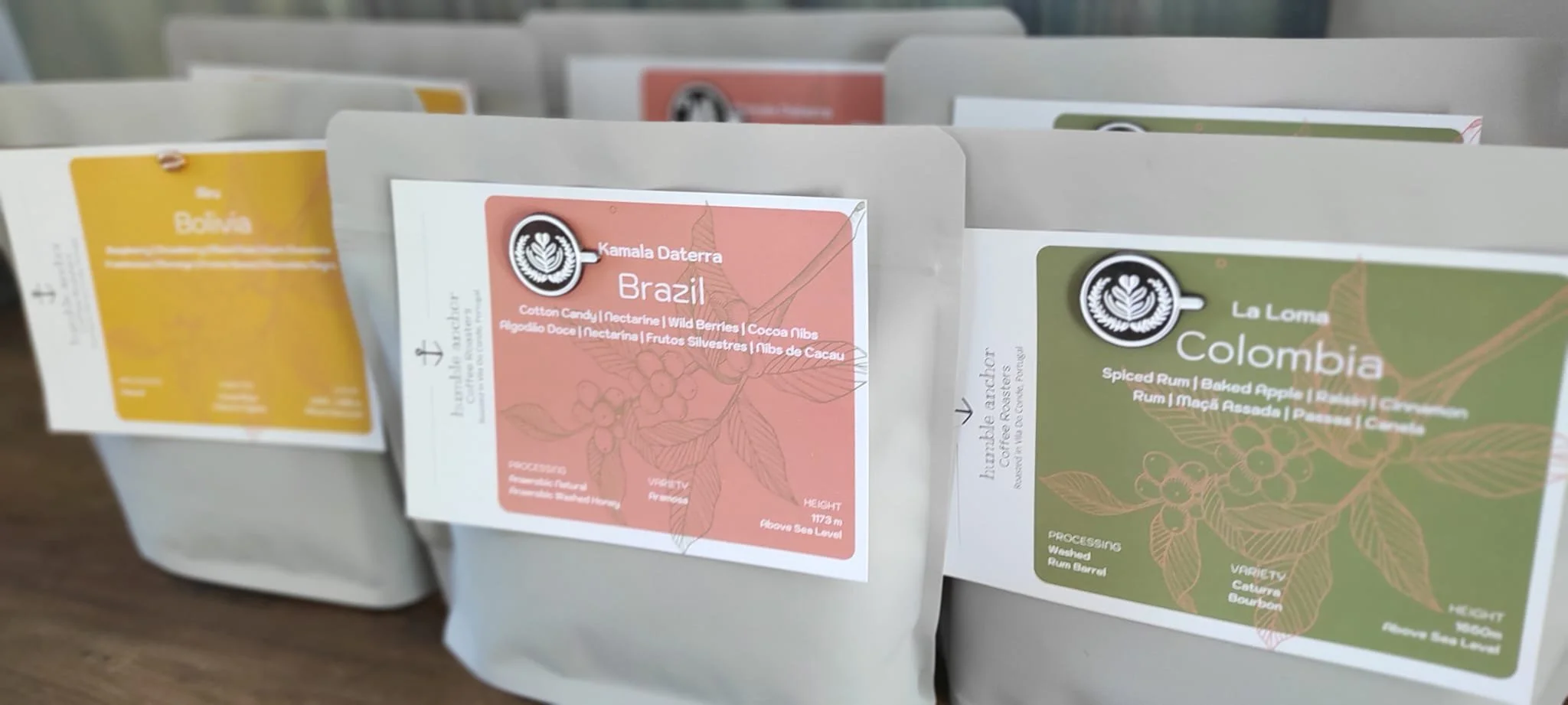Decoding Coffee Labels: Understanding Origin, Processing, Roast Date, and More
As coffee enthusiasts, we often find ourselves standing in front of an array of coffee bags, trying to decipher the cryptic information on their labels. From origin to roast date, each label holds valuable clues about the coffee inside. But fear not! In this guide, we'll unlock the secrets of coffee labels, helping you make informed decisions and explore the world of coffee with confidence.
Humble Anchor Coffee Labels
Origin: A Glimpse into Coffee's Birthplace
The origin reveals where the coffee was grown and harvested. It's like a window into the heart of coffee's birthplace, offering insights into the unique flavours the region imparts. Whether it's the vibrant acidity of Ethiopian coffee or the chocolatey, nutty richness of a Brazilian coffee, the origin lets you embark on a sensory journey with every cup.
Harvesting Coffee Cherries
Processing: The artistry of hard work and experimentation
After the coffee cherries are harvested, they undergo various processes which significantly influence the flavour profiles of the final cup.
In the honey drying process, the coffee retains some fruit pulp during drying, creating unique sweetness and complexity. The washed process removes both skin and mucilage, resulting in a cleaner, brighter taste.
Anaerobic fermentation in a low-oxygen environment leads to intriguing and experimental flavours. Additionally, natural processing involves sun-drying the whole cherry, infusing the seed with fruity and fermented notes.
These diverse methods highlight coffee production's artistry, offering enthusiasts a range of delightful taste experiences to enjoy.
Drying Beds
Single-Origin vs. Blends
Single-origin coffee comes from a specific region or even a single farm, offering distinct and nuanced flavours unique to that place. On the other hand, coffee blends combine beans from various origins to create a harmonious and balanced flavour profile. Both options have their charm, and it all comes down to personal preference.
Freshly Roasted Coffee
Roast Date: Why Fresher is not always Better?
The roast date is a critical piece of information that tells you when the coffee was roasted. Freshness is vital in coffee but did you know that after coffee is freshly roasted, it begins to de-gas and you need to wait at least 48 hours before enjoying your first cup?
Generally speaking, coffee is said to reach its peak flavour 7-14 days after it has been roasted. Look for roasters who proudly display their roast date, indicating their commitment to quality and ensuring you savour your coffee at its finest.
The Stages of Coffee
Decoding Roast Levels: Filter vs. Espresso
Filter roast and espresso roast are two distinct approaches to roasting coffee, each tailored to suit different brewing methods.
A filter roast is typically lighter, preserving more of the original characteristics and highlighting their distinct flavours. This roast is well-suited for brewing methods like pour-over, drip, and French press, where a longer extraction time allows for a more delicate and balanced cup.
On the other hand, an espresso roast is darker and more robust, designed to withstand the high-pressure extraction process of espresso machines. This roast brings out bolder, caramelized flavors, making it ideal for crafting rich and intense espresso shots and espresso-based drinks like lattes and cappuccinos. Ultimately, the choice between filter and espresso roast depends on personal preference and the brewing method being used.
Which method do you prefer?
Tasting Notes: A Flavourful Sensory Lexicon
Ever wondered what the "tasting notes" on a coffee label mean? They describe the various flavors and aromas you might experience while savoring the brew. From fruity and floral to nutty or spicy, tasting notes offer a sensory guide to your coffee adventure.
The Coffee Tasters Flavour Wheel
Brewing Recommendations: A Guide to Perfection
Finally, some labels may include brewing recommendations, offering guidance on the ideal brewing method or grind size to extract the best flavours from your coffee. Following these suggestions can lead to a delightful cup that showcases the coffee's true potential.
Roasters Workshop
Decoding coffee roasting labels opens up a world of possibilities and allows you to dive deeper into the flavours and origins of your favourite brews. With a clearer understanding of the information provided on the labels, you can confidently explore new origins, embrace various roast levels, and savor the delightful tasting notes each coffee has to offer.
So, the next time you peruse the coffee aisle or browse an online roastery, remember to seek out these valuable insights. Armed with this knowledge, you'll elevate your coffee experience, one label at a time.
Happy coffee tasting!







